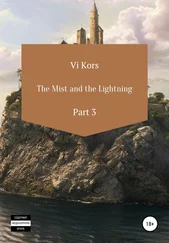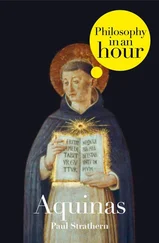Moreover it was becoming to virginal modesty that the Virgin should be troubled. Because, as Ambrose says on Luke 1:20: "It is the part of a virgin to be timid, to fear the advances of men, and to shrink from men's addresses."
But others say that as the Blessed Virgin was accustomed to angelic visions, she was not troubled at seeing this angel, but with wonder at hearing what the angel said to her, for she did not think so highly of herself. Wherefore the evangelist does not say that she was troubled at seeing the angel, but "at his saying." _______________________
FOURTH ARTICLE [III, Q. 30, Art. 4]
Whether the Annunciation Took Place in Becoming Order?
Objection 1: It would seem that the Annunciation did not take place in becoming order. For the dignity of the Mother of God results from the child she conceived. But the cause should be made known before the effect. Therefore the angel should have announced to the Virgin the conception of her child before acknowledging her dignity in greeting her.
Obj. 2: Further, proof should be omitted in things which admit of no doubt; and premised where doubt is possible. But the angel seems first to have announced what the virgin might doubt, and which, because of her doubt, would make her ask: "How shall this be done?" and afterwards to have given the proof, alleging both the instance of Elizabeth and the omnipotence of God. Therefore the Annunciation was made by the angel in unbecoming order.
Obj. 3: Further, the greater cannot be adequately proved by the less. But it was a greater wonder for a virgin than for an old woman to be with child. Therefore the angel's proof was insufficient to demonstrate the conception of a virgin from that of an old woman.
On the contrary, it is written (Rom. 13:1): "Those that are of God, are well ordered [Vulg.: 'Those that are, are ordained of God']." Now the angel was "sent by God" to announce unto the Virgin, as is related Luke 1:26. Therefore the Annunciation was made by the angel in the most perfect order.
I answer that, The Annunciation was made by the angel in a becoming manner. For the angel had a threefold purpose in regard to the Virgin. First, to draw her attention to the consideration of a matter of such moment. This he did by greeting her by a new and unwonted salutation. Wherefore Origen says, commenting on Luke (Hom. vi), that if "she had known that similar words had been addressed to anyone else, she, who had knowledge of the Law, would never have been astonished at the seeming strangeness of the salutation." In which salutation he began by asserting her worthiness of the conception, by saying, "Full of grace"; then he announced the conception in the words, "The Lord is with thee"; and then foretold the honor which would result to her therefrom, by saying, "Blessed art thou among women."
Secondly, he purposed to instruct her about the mystery of the Incarnation, which was to be fulfilled in her. This he did by foretelling the conception and birth, saying: "Behold, thou shalt conceive in thy womb," etc.; and by declaring the dignity of the child conceived, saying: "He shall be great"; and further, by making known the mode of conception, when he said: "The Holy Ghost shall come upon thee."
Thirdly, he purposed to lead her mind to consent. This he did by the instance of Elizabeth, and by the argument from Divine omnipotence.
Reply Obj. 1: To a humble mind nothing is more astonishing than to hear its own excellence. Now, wonder is most effective in drawing the mind's attention. Therefore the angel, desirous of drawing the Virgin's attention to the hearing of so great a mystery, began by praising her.
Reply Obj. 2: Ambrose says explicitly on Luke 1:34, that the Blessed Virgin did not doubt the angel's words. For he says: "Mary's answer is more temperate than the words of the priest. She says: How shall this be? He replies: Whereby shall I know this? He denies that he believes, since he denies that he knows this. She does not doubt fulfilment when she asks how it shall be done."
Augustine, however, seems to assert that she doubted. For he says (De Qq. Vet. et Nov. Test. qu. li): "To Mary, in doubt about the conception, the angel declares the possibility thereof." But such a doubt is one of wonder rather than of unbelief. And so the angel adduces a proof, not as a cure for unbelief, but in order to remove her astonishment.
Reply Obj. 3: As Ambrose says (Hexaemeron v): "For this reason had many barren women borne children, that the virginal birth might be credible."
The conception of the sterile Elizabeth is therefore adduced, not as a sufficient argument, but as a kind of figurative example: consequently in support of this instance, the convincing argument is added taken from the Divine omnipotence.
Question 31. Of The Matter From Which The Saviour's Body Was Conceived (In Eight Articles)
We have now to consider the Saviour's conception. First, as to the matter from which His body was conceived; secondly, as to the author of His conception; thirdly, as to the manner and order of His conception.
Concerning the first there are eight points of inquiry:
(1) Whether the flesh of Christ was derived from Adam?
(2) Whether it was derived from David?
(3) Of the genealogy of Christ which is given in the Gospels;
(4) Whether it was fitting for Christ to be born of a woman?
(5) Whether His body was formed from the purest blood of the Virgin?
(6) Whether the flesh of Christ was in the patriarchs as to something signate?
(7) Whether the flesh of Christ in the patriarchs was subject to sin?
(8) Whether Christ paid tithes in the loins of Abraham? _______________________
FIRST ARTICLE [III, Q. 31, Art. 1]
Whether the Flesh of Christ Was Derived from Adam?
Objection 1: It would seem that Christ's flesh was not derived from Adam. For the Apostle says (1 Cor. 15:47): "The first man was of the earth, earthly: the second man, from heaven, heavenly." Now, the first man is Adam: and the second man is Christ. Therefore Christ is not derived from Adam, but has an origin distinct from him.
Obj. 2: Further, the conception of Christ should have been most miraculous. But it is a greater miracle to form man's body from the slime of the earth, than from human matter derived from Adam. It seems therefore unfitting that Christ should take flesh from Adam. Therefore the body of Christ should not have been formed from the mass of the human race derived from Adam, but of some other matter.
Obj. 3: Further, by "one man sin entered into this world," i.e. by Adam, because in him all nations sinned originally, as is clear from Rom. 5:12. But if Christ's body was derived from Adam, He would have been in Adam originally when he sinned: therefore he would have contracted original sin; which is unbecoming in His purity. Therefore the body of Christ was not formed of matter derived from Adam.
On the contrary, The Apostle says (Heb. 2:16): "Nowhere doth He"—that is, the Son of God—"take hold of the angels: but of the seed of Abraham He taketh hold." But the seed of Abraham was derived from Adam. Therefore Christ's body was formed of matter derived from Adam.
I answer that, Christ assumed human nature in order to cleanse it of corruption. But human nature did not need to be cleansed save in as far as it was soiled in its tainted origin whereby it was descended from Adam. Therefore it was becoming that He should assume flesh of matter derived from Adam, that the nature itself might be healed by the assumption.
Reply Obj. 1: The second man, i.e. Christ, is said to be of heaven, not indeed as to the matter from which His body was formed, but either as to the virtue whereby it was formed; or even as to His very Godhead. But as to matter, Christ's body was earthly, as Adam's body was.
Читать дальше












